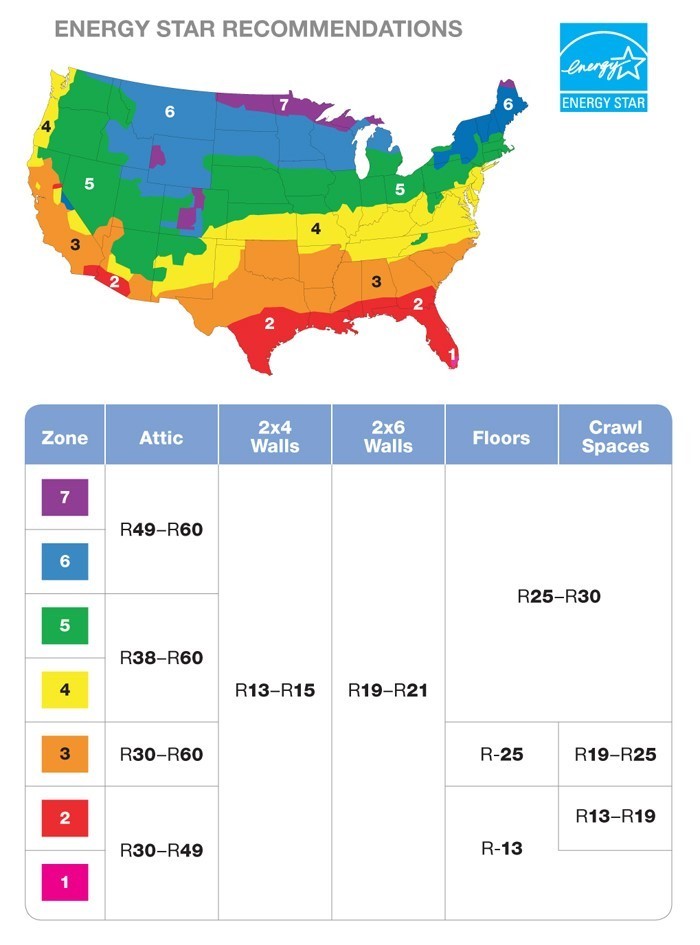Anyone who’s started to consider insulation options has probably come into contact with the phrase “R-value.” It’s common insulation lingo, but not many people actually know what an r-value is or how it’s applied to insulation. R-values are actually the most important detail of what makes insulation effective, so it’s important to understand both what an r-value is and what makes it effective. In order to do that, we’re going to walk through the basics of heat flow, insulation efficiency, and then talk about energy loss in and outside the home.
To understand how insulation works it helps to understand heat flow, or how heat and energy move in and out of your home.
 The Energy Department of the United States describes heat flow as involving three basic mechanisms — conduction, convection, and radiation. Conduction is the way heat moves through materials, such as when a spoon placed in a hot cup of coffee conducts heat through its handle to your hand. Convection is the way heat circulates through liquids and gases, and is why lighter, warmer air rises, and cooler, denser air sinks in your home. Radiant heat travels in a straight line and heats anything solid in its path that absorbs its energy. Insulation materials work to reduce conduction and convection heat losses by slowing them down; for example, putting thicker insulation materials in the way. Radiant heat loss is prevented by reflective insulation materials that are installed to return radiant heat back in the direction it came from, for example, cool roof insulation materials. The way we measure how much heat a material can slow down, absorb, or reflect, is through R-values,
The Energy Department of the United States describes heat flow as involving three basic mechanisms — conduction, convection, and radiation. Conduction is the way heat moves through materials, such as when a spoon placed in a hot cup of coffee conducts heat through its handle to your hand. Convection is the way heat circulates through liquids and gases, and is why lighter, warmer air rises, and cooler, denser air sinks in your home. Radiant heat travels in a straight line and heats anything solid in its path that absorbs its energy. Insulation materials work to reduce conduction and convection heat losses by slowing them down; for example, putting thicker insulation materials in the way. Radiant heat loss is prevented by reflective insulation materials that are installed to return radiant heat back in the direction it came from, for example, cool roof insulation materials. The way we measure how much heat a material can slow down, absorb, or reflect, is through R-values,
The higher the R-value, the more effective the insulation will be.
R-values depend on the type of insulation, its thickness, and its density, and can also be affected by the location of the home that needs insulating and the climate where the insulation is installed. Attached are some charts indicating what R-Values should be used based on where in your house the insulation is installed and where in the country your home is located.
Having the right R-value insulation can often mean hundreds of dollars saved on utility spending and unnecessary repairs per year. Make sure to check with your insulation professional or home renovator to ensure that your insulation is the right R-value to fit your needs.
